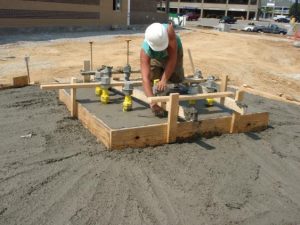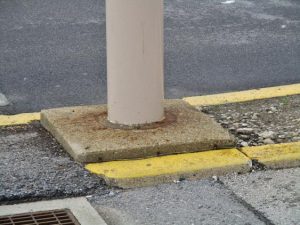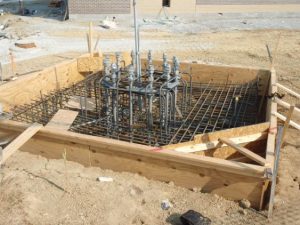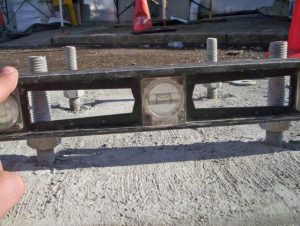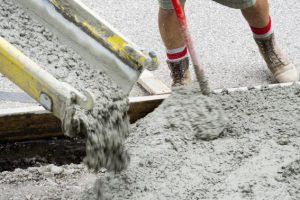FREESTANDING OUTDOOR SIGNS must be designed to withstand the rigors of wind and weather through-out their usable lifetimes. Installation of concrete sign foundations thus represents a crucial step impacting the overall quality and durability of projects. In addition to executing these procedures properly, it’s important for sign installers to understand the rationale for each step in the process.
Site Preparation
Because each sign foundation begins with an excavation, verifying and locating underground utility lines in the area proposed for installation represents an essential first step. To avoid potential hazards and expenses, the installation contractor should always contact the local utility companies. Gas, water and electric firms maintain toll-free phone numbers for this purpose and, in some cases, your proposed sign installation site might need to be altered to avoid conflicts.
Once utility clearances are confirmed and the foundation’s dimensions have been clearly marked at the site, excavation work can begin. In many cases – and assuming efficient scheduling – it’s feasible to complete the excavation, assemble the concrete forms and pour the concrete within a single workday. But complex foundations for very large signs that require extensive forming and reinforcing steel (commonly known as “rebar”) might not allow pouring and finishing on the same day. In these cases, it’s extremely important to cover open excavations with waterproof tarpaulins in case of rain or snow. For safety until work resumes, the excavation site also must be properly barricaded.
Because concrete is mixed with carefully prescribed amounts of water, additional water in your excavation is undesirable. Thus, when rainwater or groundwater leaks into the excavation, it must be pumped out prior to pouring the concrete. Otherwise, this extra water weakens the entire foundation.
The two most commonly used configurations are direct-embedment and anchor-bolt foundations. In the direct-embedment type, the sign pole itself is embedded into the concrete when it’s poured. Anchor-bolt foundations utilize long, large-diameter steel bolts embedded in the concrete. The bolts are arranged in a pattern matching holes in the steel base plate welded to the bottom of the sign pole when it’s fabricated.
When installing an anchor-bolt foundation, it’s advisable to assemble the steel or wooden template that supports and aligns the bolts in advance rather than on the job site. Similarly, when installing either type of foundation, assembly of the reinforcing steel grid as specified in the project plans can largely be completed at your shop and hauled to the job site. Doing this work in advance facilitates accuracy and saves time on the site.
Advertisement
Pouring, Finishing, Curing
As a general rule, a sign foundation should incorporate an exposed cap protruding at least 6 in. above the existing grade level. This is important because many locations where signs are installed are susceptible to collection of rainwater. If the top of the foundation is level with the existing grade or elevated only slightly, the exposed base of an embedded pole – or the anchor bolts – might periodically be immersed in standing water. This rapidly corrodes the pole or bolts and significantly degrades their rated strength.
When installing anchor-bolt foundations, the bolt array – or arrays in the case of double- or multi-pole signs – must be level and all bolts must protrude approximately the same distance above the top of the finished foundation cap. This protrusion must be sufficient for adequate clearance to permit adjustment of the leveling nuts upon which the pole’s base plate will rest. Additionally, this protrusion must account for the thickness of the pole’s base plate, washers and top nuts that will fasten the pole to the foundation.
When pouring concrete, cement-truck operators must carefully regulate the concrete flow and positioning of their delivery chute. Because concrete is quite heavy, it can easily push forms and reinforcing steel askew. To avoid this, ensure that the truck operator distributes the wet concrete carefully and evenly as the excavation is filled.
Proper curing of concrete is essential to the foundation’s ultimate strength. Thus, it’s crucial to retard evaporation of water from freshly poured concrete, particularly during the initial seven-day curing period. Typically, this is accomplished by covering the foundation cap and any other exposed concrete with polyethylene sheets.
The Portland Cement Association publication Design and Control of Concrete Mixtures recommends that heavily reinforced, mass concrete sections should be cured for a minimum of seven days. This guideline assumes ambient temperatures at the project site within a range of 50-70° F. During cold weather, it’s advisable to extend the seven-day curing period and, particularly, to avoid freezing of water in the freshly poured concrete. A reasonable option in these circumstances is to order air-entrained concrete, which is highly resistant to freezing but does not incorporate any concrete additives that could degrade the foundation’s ultimate strength.
PHOTO GALLERY (5 IMAGES)
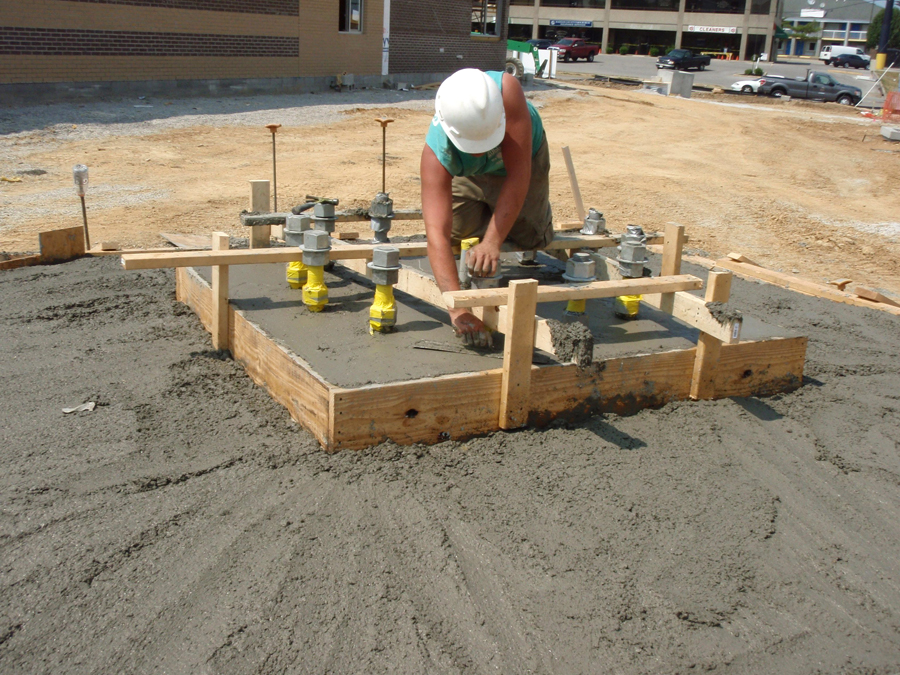

 Tip Sheet3 days ago
Tip Sheet3 days ago
 Business Management2 weeks ago
Business Management2 weeks ago
 Women in Signs2 weeks ago
Women in Signs2 weeks ago
 Real Deal4 days ago
Real Deal4 days ago
 Editor's Note1 week ago
Editor's Note1 week ago
 Benchmarks15 hours ago
Benchmarks15 hours ago
 Line Time2 weeks ago
Line Time2 weeks ago
 Product Buying + Technology1 week ago
Product Buying + Technology1 week ago
